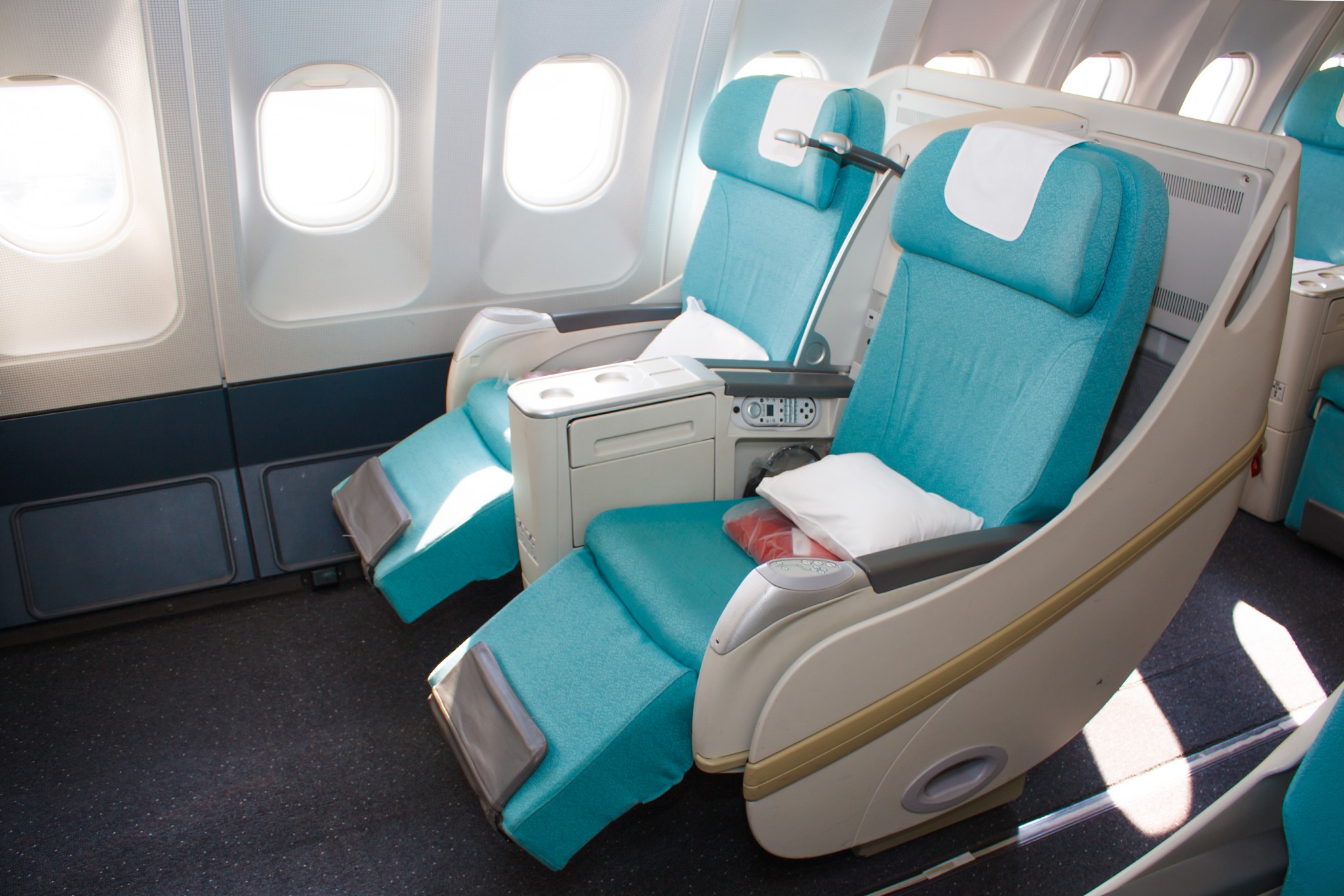Whether departing on Imperial Airways from Great Britain or Pan Am in the US, for most of the 20th century you had no need for business class. Only the wealthy could afford to fly.
In 1934, anyone with £180 ($17,000 today) could travel on Imperial Airways from London to Singapore. Almost 8500 miles, the trip took 8 days and approximately 22 stops. Hotel accommodations and food were included.

For business class, US airline deregulation in 1978 was a turning point. Once government no longer controlled interstate fares and routes, the industry became competitive. Suddenly concerned about revenue, they needed to attract discretionary and business travelers. While the typical discretionary traveler’s demand was price sensitive, the business traveler was willing and able to pay much more.
In a recent New Yorker article, writer David Owen tells the story of the business class seat. As he so perfectly explains, “…a premium-class seat has to create an impression of opulence in what is actually a noisy and potentially nausea-inducing metal tube filled with strangers. If you checked into a luxury hotel and were taken to a room the size of a first-class airplane cabin, and told that you’d be sharing it with eleven people you didn’t know, all of whom would be sleeping within a few feet of your own skinny bed, you wouldn’t be thrilled, especially if you were paying twenty thousand dollars for the experience.”
James Park is the man who solved the problem. A British architect who first worked on luxury train cars for the Orient Express, his mind set was about making less space feel like more. From train design and restoration, he moved to airplanes after winning a Singapore Airlines competition. The winning firm was charged with re-conceptualizing the premium flying experience. Previously composed of bigger seats with comfy legroom, the first class cabin was little else. Park’s approach was to create a club atmosphere.
His design challenge though, was to combine luxury with safety requirements. He would have to use fire retardant fabrics and impact resistant seats that could withstand 16 times the force of gravity. His paints would have to prevent the wood they coated from igniting. Even the bounce of a seat cushion was calibrated because of the need to contain the distance a passenger could be flung during a crash. “De-lethalization” is the name of the safety process that touched almost every inch of the cabin.
First implemented in 1998, business class luxury has become a competitive strategy. Seat access, sleeping room, snack comfort, work compatibility have all become design elements that attract travelers who can afford to pay as much as $20,000 for a ticket. One survey indicated that flyers who like their seats even give the same movie a higher rating. Still using James Park’s firm to design their premium cabins, Singapore Airlines has said that personal service remains their competitive advantage.
As economists, the story of business class is a tale of product differentiation. On the one hand, airlines needed to distinguish between the flying experience of discretionary and business travelers. But also, as with Singapore Air, they want to display that their service tops all others.
Sources and Resources: Having had the pleasure of listening to David Owen describe his work during a talk in Nantucket, and then reading most of his articles and books, I again recommend his work. His New Yorker article on”wooing the one per cent,” “Game of Thrones” was excellent and led me to additional air history facts at a Gizmodo and through a more scholarly paper. Meanwhile, at econlife, we looked at business class seats and have some pictures in a post from last year.
Airline Product Differentiation: It's About More than Just Plane Comfort

Elaine Schwartz
Elaine Schwartz has spent her career sharing the interesting side of economics. At the Kent Place School in Summit New Jersey, she was honored with an Endowed Chair in Economics. Just published, her newest book, Degree in a Book: Economics (Arcturus 2023), gives readers a lighthearted look at what definitely is not “the dismal science.” She has also written and updated Econ 101 ½ (Avon Books/Harper Collins 1995) and Economics: Our American Economy (Addison Wesley 1994). In addition, Elaine has articles in the Encyclopedia of New Jersey (Rutgers University Press) and was a featured teacher in the Annenberg/CPB video project “The Economics Classroom.” Beyond the classroom, she has presented Econ 101 ½ talks and led workshops for the Foundation for Teaching Economics, the National Council on Economic Education and for the Concord Coalition. Online for more than a decade. econlife has had one million+ visits.





